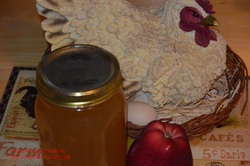 VINEGAR READY TO USE
VINEGAR READY TO USE
MAKING VINEGAR THE JUST FOWLING AROUND WAY:
Chicken Coop Chatter©
Since we use Pure Apple Cider Vinegar in water for chicks and chickens, it is useful to know how to make your own. We use the vinegar for proper balance in digestion of the birds. Chicks and especially chicks that are shipped, are typically very stressed when they arrive at your post office or door step. Adding 1 T. Pure Apple Cider Vinegar to a gallon of water, will help balance their nervous system and stomach acidity levels, to calm them. If older chickens tend to appear ill or lethargic, providing the vinegar water will help them to maintain a healthy balance.
Throughout the internet and Facebook, you will see others making vinegar, however I have never seen warnings associated with making or using it. Here at Just Fowling Around, we feel it must be noted, that long term use of the vinegar water can be unhealthy and cause a type of poisoning, (hypokalemia, octeoporosis and hyperreninemia.),so it should be used when necessary, but not long term or daily for healthy chicks and chickens. Our body level needs to be balanced at about 7.3 pH. If that is drastically altered long term, it can cause Anemia by destroying red blood cells and other health issues may develop. Again, we caution, that though vinegar is highly valuable for a variety of uses, you do need to be aware of long-term side effects and be aware that unless tested, your own vinegar may not be of proper acidic level for use in canned vinegar based products.
Making vinegar is easy and any fruit can be used, however apples are common as you see in Apple Cider Vinegar. For those of you that drink wine, you may have noticed if the wine sits long enough it will turn to vinegar or begin turning to vinegar. If any fruit sits long enough it will begin smelling like vinegar, and can be strained off to use as vinegar.
While making vinegar is easy, it must be noted that acidity level is a science. Just because you can make vinegar, does not mean it will be the proper acidity level for preserving pickles and other vinegar based canned products. You can use your homemade vinegar for vinegar based projects, however; those projects should be refrigerated, not canned for long term storage.
You can test the acidity level of your vinegar. There are a variety of sources for testing equipment and you may even find them in a wine or beer making supply store. You may be able to have your local extension office test for the acidic level of your vinegar. Vinegar for canning should be at least 5% acidity. Level 7 on an acidity scale is center. Pure water is right at the 7 level. Readings below 7 are acidic, readings above 7 are alkaline. As comparison, a reading of about 11 is Ammonia, and Bleach solution about 13. On the other side of the scale, Orange juice is about 3, while lemon juice is about 2.
The process for making vinegar is quite simple, but will take up to 6 weeks for the vinegar to be ready for use and you will need a dark closet or cupboard to keep it in as it ferments and develops the *mother*. You will want to check your vinegar periodically to make sure it is developing properly. The mother is basically the starter that you can use for making more vinegar. Even some store bought organic or un-pasteurized vinegar will have mother showing in it. The mother may be best described as a glob of slime, and may turn people away from purchasing that vinegar, but for those that know what that glob is, will grab up that bottle for making their own, using the *mother* as starter.
DIRECTIONS FOR MAKING PURE APPLE VINEGAR
There are no special tools needed for making the vinegar, but if you want to test the acidity level you will need to purchase acidity paper or gauge for testing.
Any apples can be used, however the higher tannin level the better. Granny Smith is an example of an apple with a high tannin level. Peels and cores can be used anytime you're making applesauce, apple pies or other apple projects to make vinegar.
Wash apples thoroughly. Peel and core the apples. Allow the Cores and peels of apples to brown. Simply place those cores and peels in a glass container, and cover completely with distilled water or tap water that has sat at least 24 hours. Cover the container with cheese cloth and secure with a rubber band. Check the vinegar periodically, adding water to cover as necessary. As the vinegar forms the apple parts will start to shrink and sink into the container and water will no longer need to be added. After about one week, you will notice a white foam forming on top of the vinegar. This is the *mother* forming. Strain this liquid into a clean container. Cover with cheese cloth and secure with a rubberband. Stir weekly with a wooden or plastic spoon. At the end of the 6 weeks, stir with a wooden or plastic spoon and strain off the vinegar, The *Mother* will be visible in the liquid and can be used to start more vinegar. Store in glass jars. You can remove the *mother* as the base for another batch of vinegar. Though the vinegar can be used at the end of 6 weeks, it continues to develop and mature up to 6 months.
TOOLS AND INGREDIENTS:
APPLE PEELS AND CORES
WATER
GLASS CONTAINER
WOODEN OR PLASTIC SPOON
CHEESE CLOTH
RUBBER BAND
PLASTIC STRAINER
pH TESTING KIT: (click on the link below for testing kit)
Chicken Coop Chatter© All rights reserved 2011-2016
 RSS Feed
RSS Feed





